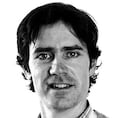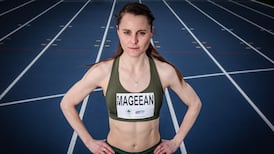This story is part of a series, The Greatest Irish Olympic Stories Never Told, which will run every Saturday in The Irish Times up to the beginning of the 2024 Olympic Games, on Friday, July 26th
Santa Monica City College, Los Angeles, August 12th, 1984
They gathered on the starting line at five o’clock on the Sunday evening. A field of 107 runners, from 59 countries, what was then the most global of Olympic marathons, more deeply competitive than any assembled. Before or since.
After two and a half laps of the Santa Monica track, they set out via Olympic Boulevard through the suburbs of Venice and Culver City and on towards the Los Angeles Memorial Coliseum. In the still searing heat, under blue skies and without a blink of shade, 26.2 miles of unforgivingly fast running.
Few had eyes on John Treacy. Certainly not as a potential medal winner. Not when the 27-year-old Irishman was racing the distance for the first time, a marathon debutant among marathon greats.
READ MORE
They were all there. Reigning marathon world champion and world record holder Rob de Castella from Australia, unbeaten at the distance in four years; African record holder Juma Ikangaa from Tanzania; the top Kenyan Joseph Nzau; the American favourite Alberto Salazar, three-time winner of the New York marathon; Dutchman Gerard Nijboer, the European champion.
And Carlos Lopes from Portugal, at age 37 the veteran of the field and unquestionably the most experienced, the reigning World Cross-Country champion running in his third Olympics.
Treacy had another reason to be fearful. Six days earlier, he’d run the 10,000m final inside the Coliseum, three days after running the 10,000m heats. He finished 10th (later promoted to ninth when Finland’s Martti Vainio was disqualified for doping). In all, he’d 50 fast laps of the Coliseum already in his legs. No man or woman would run further than Treacy did that week in LA.
It wasn’t the result he wanted, and in the interview zone afterward Treacy was asked if he was still serious about running the marathon. “I’m definitely still running the marathon,” he replied. “I’ll see you at the finish.”
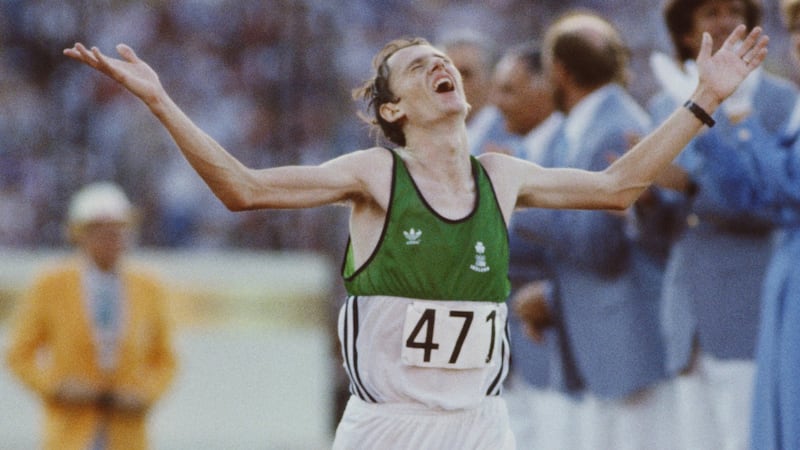
Which is exactly what he did, as Treacy defied all predictions and most logic to win the silver medal, only Lopes getting the better of him, winning gold in an Olympic record of 2:09:21. Treacy finished in 2:09:56, two seconds ahead of Spedding in third, a time that would have won him gold in the next five Olympic marathons.
But that performance is ever more extraordinary when set against how he made it to that marathon starting line to begin with – his bold decision to move to the US; the key role of an Argentinian-born doctor; the gamble of a shoe sponsor; and a large slice of luck in his marathon selection. Had it not been for a serendipitous turn of events, Treacy’s international running career might well have ended the summer before.
Helsinki Olympic Stadium, August 7th, 1983
When they lined up for the heats of the 10,000m at the first World Athletics Championships, Treacy’s confidence was already low. Running in the first heat, with only the top five sure of qualifying for the final, Treacy soon trailed off and finished 11th.
Later that week, Eamonn Coghlan made history by winning the World Championships 5,000m title. But Coghlan knew how badly Treacy was struggling.
Earlier that year in March, Treacy had dropped out of the World Cross-Country Championships in Gateshead, a race he’d won twice before, in 1978 and 1979. The following week Coghlan met up with Treacy in Wynn’s Hotel, Dublin along with a couple of close friends. After several rounds of drinks, their advice to Treacy was clear.
He needed to move back to the USA.
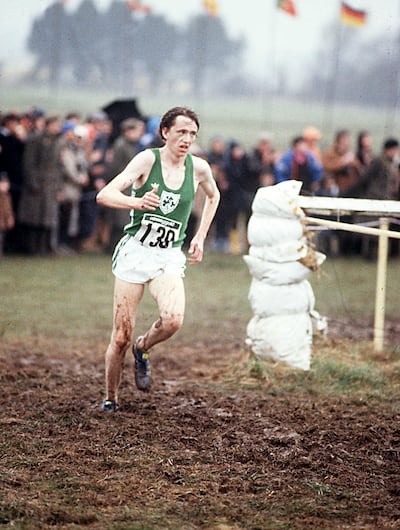
In 1974, he’d taken up a running scholarship at Providence College in Rhode Island, and that was his home until 1980, when he moved back to Ireland after the Moscow Olympics, and started working with the Irish Trade Board in Dublin.
By 1983, now married to his wife Fionnuala and with a one-year-old daughter Caoimhe, the demands of his job were clearly impacting on his training, most of which he was doing alone. “I’m going down the wrong path here,” Treacy realised. “I’m a world-class runner, but I’m not any more.”
Treacy took the advice of his friends on board. “If things don’t improve by the end of the summer, we’ll definitely be going back,” he said.
Within a few hours of that 10,000m heat in Helsinki, he rang home to Fionnuala and told her to start making plans to move to Providence. By the time Treacy arrived home a couple of days later, she’d already sold both their cars and rented out their house in Dundrum.
On October 7th, Treacy headed back to Providence, rented a house from an old college friend, before his wife and daughter joined him a few weeks later. It was a big upheaval, Treacy had to make it work.
He soon felt the benefits of his old environment, particularly having training partners in Brendan Quinn, Richard Mulligan, Richard O’Flynn, Mick O’Shea and Charlie Breagy, the other Irish runners who had attended Providence, still training in the area under the guidance of their former college coach Bob Amato.
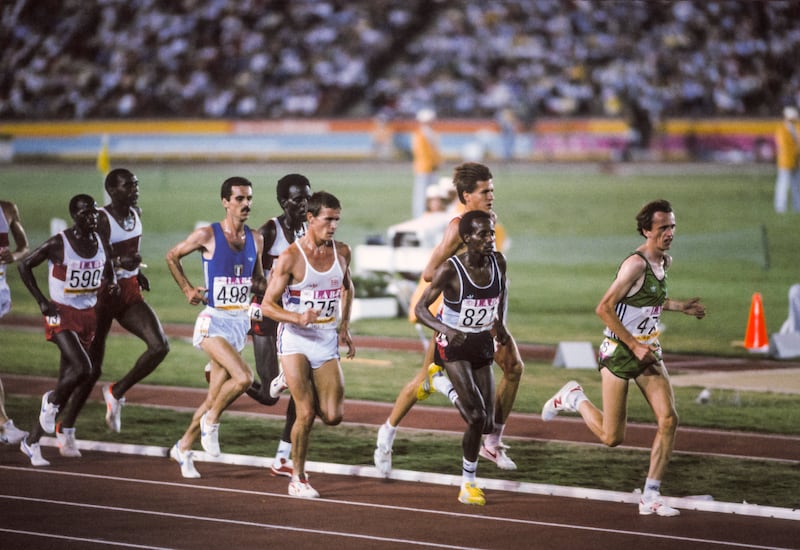
Within a few weeks Treacy eased himself into some road races, his old form slowly returning. On Thanksgiving Day that November, he finished a close second to Coghlan at the Manchester Road Race in Connecticut.
“You’re back John,” Coghlan told him.
“Not yet,” he said, “but I’m coming back.”
Around this time came another critical intervention: Amato’s training group were getting additional guidance from a team of doctors doing research on distance runners out at Fitchburg State University, in western Massachusetts, and Treacy would start getting the benefits of this too.
Chief among them was Dr Dario Herrera, the Argentinian-born doctor who’d come to the US in 1954, a specialist in cardiology and an avid marathon runner, along with Dr Lee Cunningham, a physiologist, and Dr Frank Santopietro, a podiatrist.
All three were fixated on how to maximise training and minimise the risk of injury. Dr Herrera focused on a range of tests, including Vo2 Max, the measure of cardiorespiratory fitness, and running efficiency, and in Treacy’s case all these pointed towards one thing.
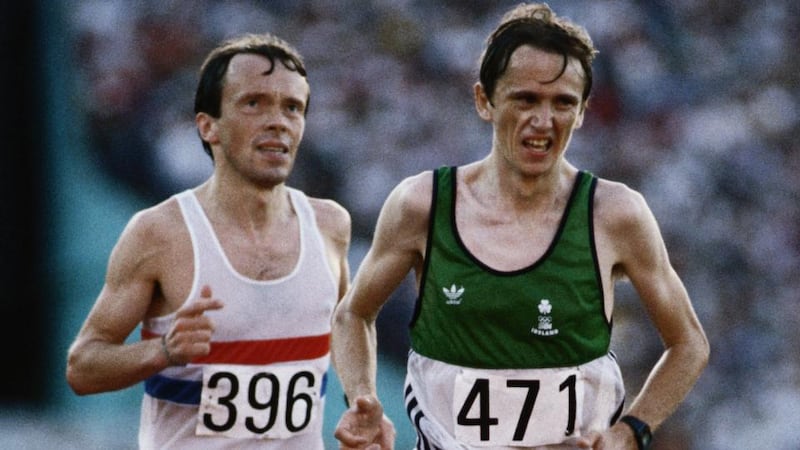
“These tests don’t tell lies, your potential is in the marathon,” Dr Herrera told him. “It won’t change that much of your training for the 10,000m, but it might give you another option for LA.”
For the first time, the Olympic marathon seed was planted in Treacy’s head. It would still require some time to start sprouting.
Meadowlands Racetrack, New York, March 25th, 1984
Then, as now, the World Cross County was considered the hardest race, and in Olympic year few dared miss it. Lopes laid down a marker of his marathon intentions, winning his first title, and Treacy had an encouraging run, finishing just over 30 seconds behind in 13th, his best result since winning in Limerick in 1979.
“I’m definitely on the way back now,” Treacy realised. “Definitely finding my old form here again.”
There was another welcome boost when he arrived back in Providence. Fellow Irish runner Ray Flynn had just signed a new deal with Team Kangaroos, leaving his previous sponsor New Balance with a (sort of) spare contract. Marketing head Kevin Ryan, a former marathon runner from New Zealand, was impressed by Treacy’s return to form, and offered him the New Balance contract. A four-year deal.
“New Balance took a bet on me, and this made a huge difference, allowed me to focus more on training, and not having to race to make some money.”
Dr Herrera, meanwhile, continually pressed him more towards the marathon, and around that point Treacy made his first approach to BLE, the then governing body of Irish athletics. “I am serious about the marathon, all the tests suggest it could be my best distance,” Treacy told Al Guy, BLE’s long-serving international secretary. “Leave it with me,” Guy replied.
BLE had announced an Olympic marathon qualifying standard of 2:14.00, and declared the Cork City Marathon on Easter Monday, April 23rd, as their Olympic trial. On an unseasonably hot day, Jerry Kiernan held on to win in 2:14:30, nine seconds ahead of Dick Hooper.
Bizarrely, Kiernan was disqualified for wearing an over-sized Adidas logo, although for selection purposes his time stood. Almost unnoticed, Gerry Deegan, Treacy’s close friend from their Waterford running days, came through to finish third in 2:18:20, but (luckily for Treacy) not enough to consider him for selection.
Kiernan and Hooper got the nod (Kiernan, remember, also running brilliantly in LA, finishing ninth in 2:12:20).
Three days later, on April 26th, Treacy went to the Penn Relays and finished third in 28:01.3, his fastest 10,000m in four years. And fast enough to qualify him for the Olympics. He was unquestionably back now, but still Dr Herrera had him leaning increasingly towards the glycogen-depleting training runs for the marathon.
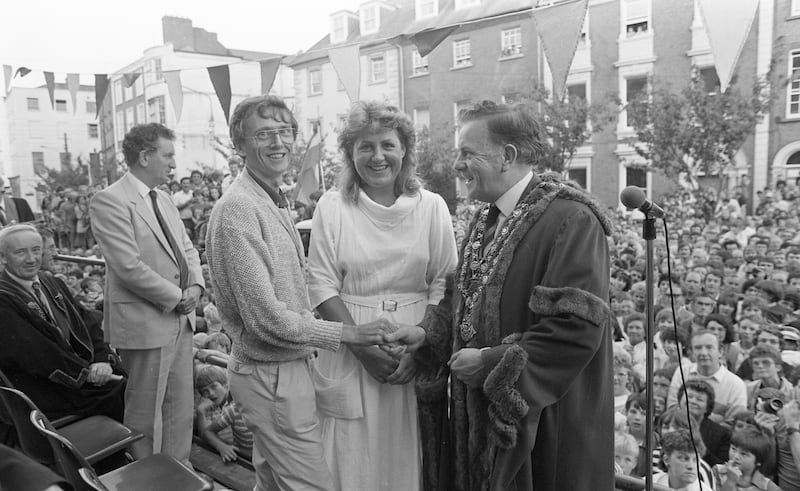
On May 12th, Treacy ran his first half marathon in New Rochelle in New York, winning in 1:05:14, then continued for another seven miles. Back in Providence, an early summer heatwave proved perfect practice for LA, and Treacy increased his long Sunday runs to 25 miles, then 27 miles, before on June 9th, he ran 29 miles, in three hours flat, in the then searing Rhode Island heat. “Something is happening now,” Treacy realised.
Then came confirmation of his marathon selection; unlike today, Olympic marathon qualifying standards had some flexibility, and an athlete could be nominated by their national governing body provided they had a qualifying standard in another event (in Treacy’s case the 10,000m).
Crucially, Treacy’s marathon nomination by BLE also got the approval of the Olympic Council of Ireland (OCI), along with Kiernan and Hooper. Had any other Irish marathon runner also been pressing for selection things could have been different, and Treacy might have missed out.
Selection confirmed, Treacy returned to Europe for three track races; still not entirely sure about attempting the 10,000m-marathon double, he went to the Bislett Games in Oslo and took almost three seconds off Coghlan’s Irish 5,000m record, clocking 13:16.81, finishing fourth, one place behind Lopes.
“Dr Herrera did try to convince me to skip the 10,000m. But I felt I had unfinished business in that event. It did take a lot out of me before the marathon. Of course it did.
“But it also made me stronger, psychologically. Going into that marathon, it was win a medal, or die. That was my attitude.”
And we all know how that story ended.

